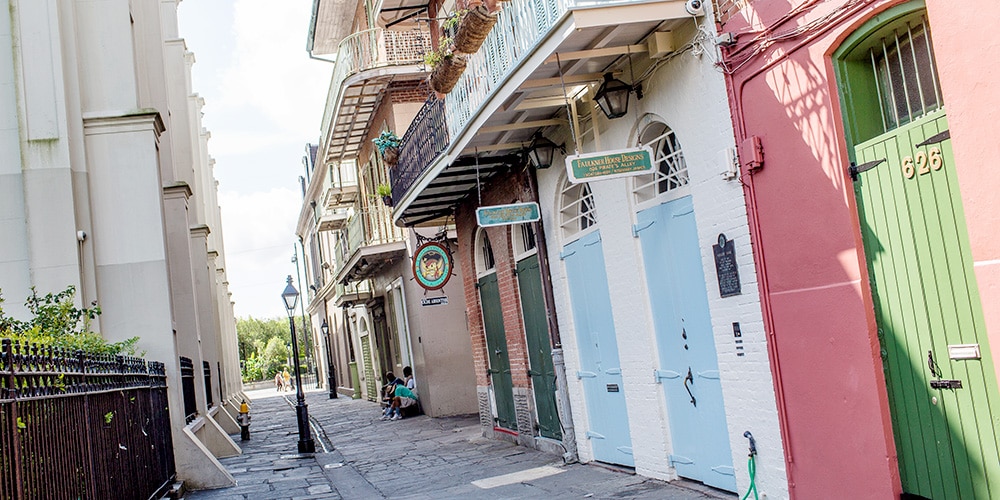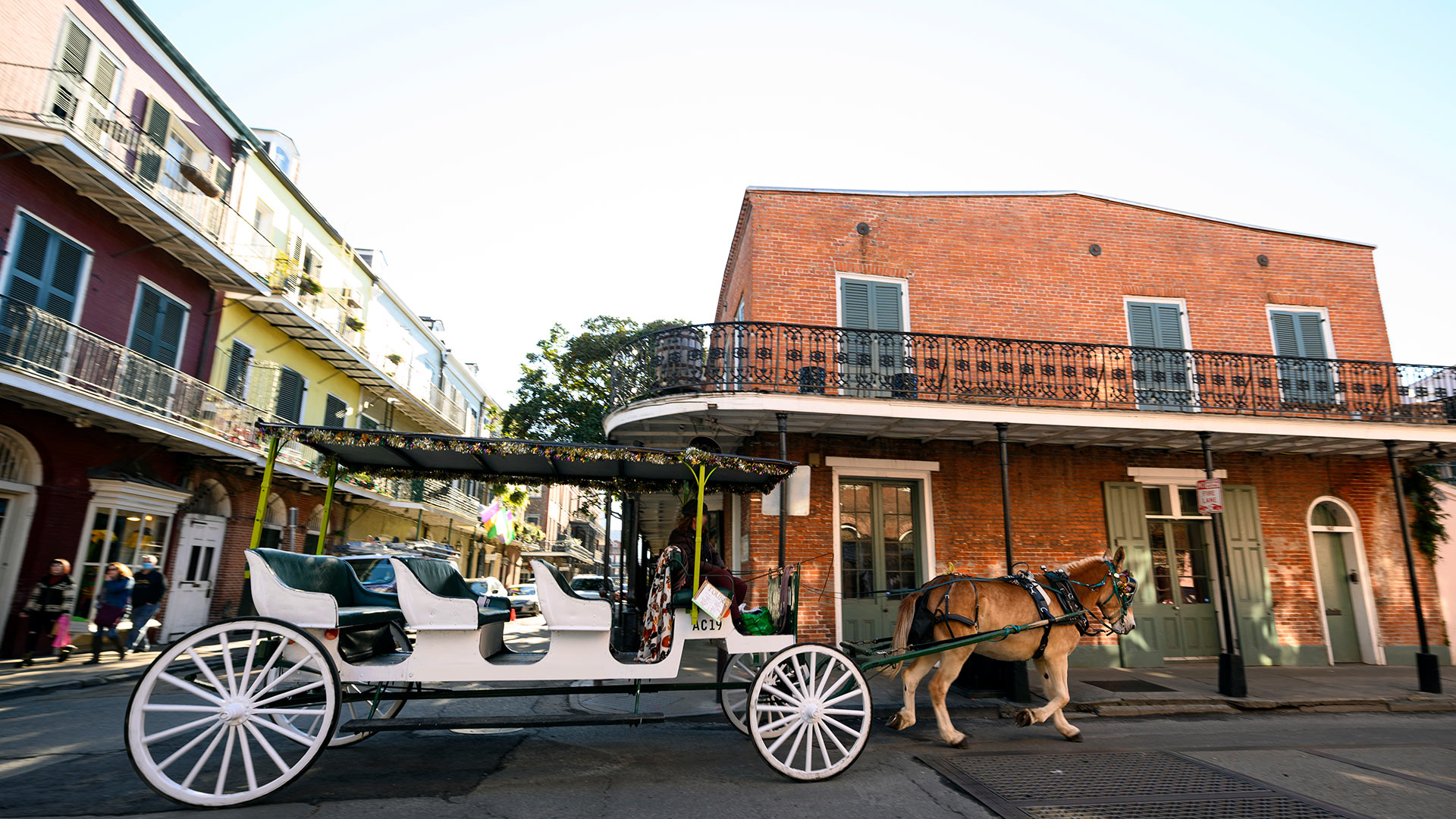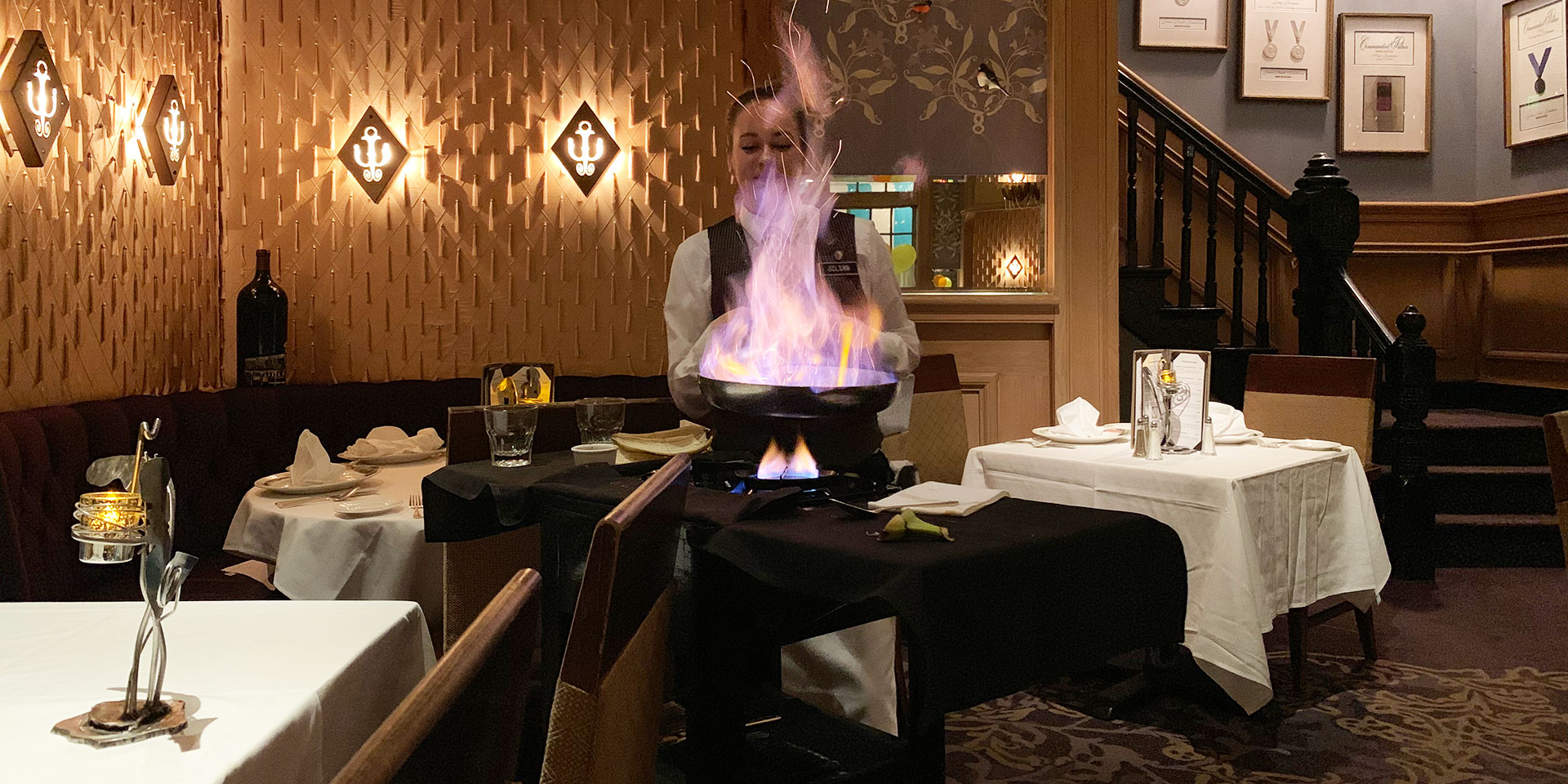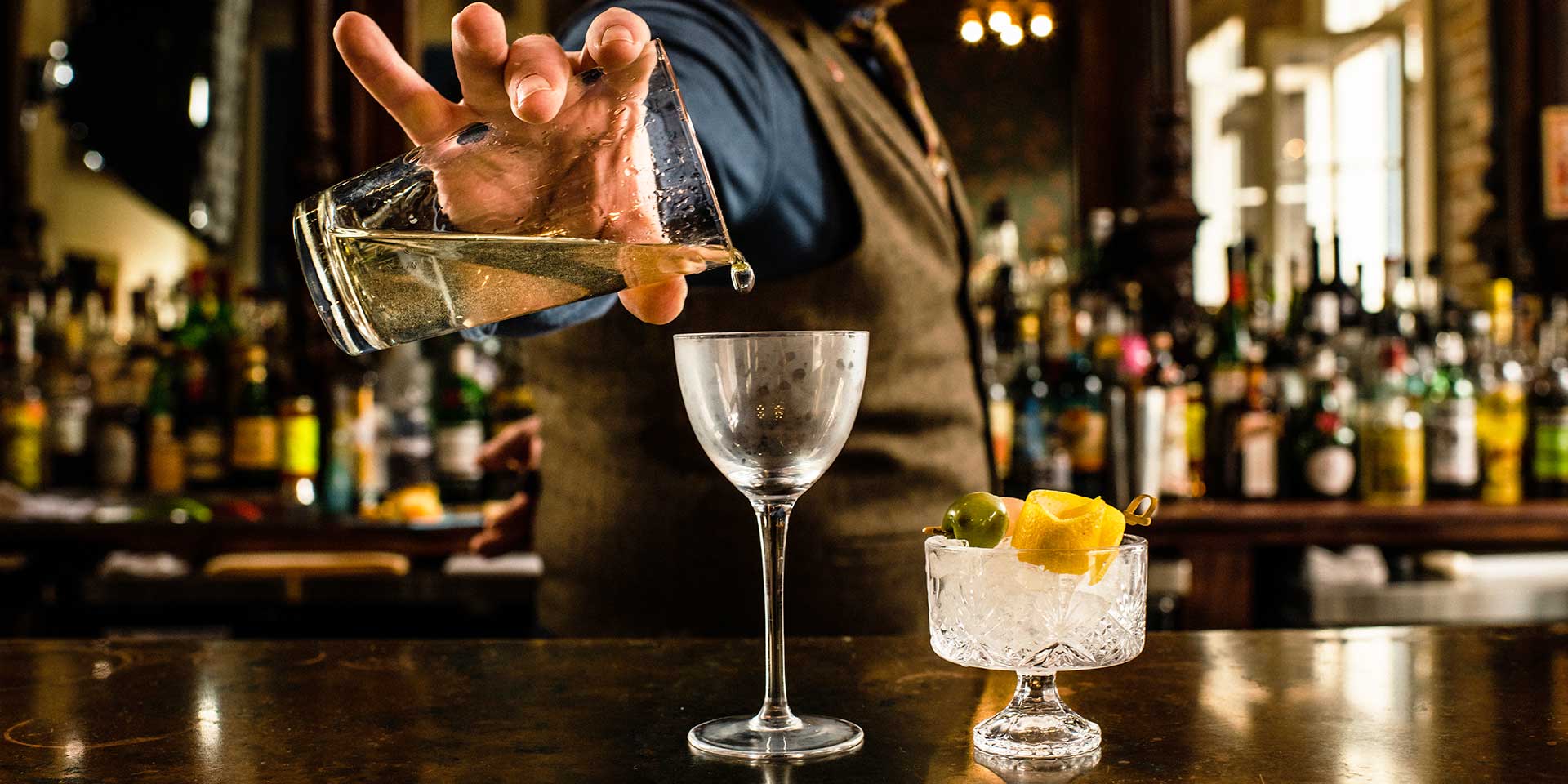
New Orleans literary landmarks Pirates Alley and Faulkner House Books (Photo: Joshua Brasted)
William Faulkner once said New Orleans is “the city where imagination takes precedence over fact.” So, it’s no surprise that New Orleans is the birthplace and setting for many famous authors and their works of fiction. The city’s endless parade of characters, easygoing attitude and gumbo of Caribbean, European and African cultures mean there’s no shortage of inspiration. Next time you’re in New Orleans, hit up some of the city’s literary landmarks to experience the settings of your favorite books, or maybe soak up some inspiration for your own literary endeavors.
Tennessee Williams’ apartment. Tennessee Williams lived in various apartments in the French Quarter, which he referred to as “the last frontier of Bohemia,” including an attic apartment at 722 Toulouse Street that is now apart of the Historic New Orleans Collection. But the only house he owned is at 1014 Dumaine Street, where friends and scholars say he swam every day he lived there — even during the winter. He lived in the apartment off and on until his death in 1983. Stroll by the apartment, look up at the balcony and, maybe even, shout “STELLA!” if you feel so inspired — it’s New Orleans; no one will take a second glance.
Pirates Alley/Faulkner House. Down Pirates Alley, a romantic alleyway off Jackson Square, William Faulkner and artist William Spratling shared an apartment and got up to mischief in the French Quarter. Today, that apartment building houses Faulkner House Books, a cozy bookstore that sells new and used books and rare editions. Another nearby literary landmark is the Pontabla Apartments, facing Jackson Square on St. Anne and St. Peter Streets, where novelist Sherwood Anderson hosted famous salons that included the likes of Faulkner, Somerset Maugham, Edna St. Vincent Millay and Carl Sandburg.
Ignatius J. Reilly statue. Ignatius J. Reilly’s Canal Street — as depicted in John Kennedy Toole’s Pulitzer Prize-winning tragicomedy, “A Confederacy of Dunces” — looks very different than the one today. But you can still see Ignatius disapproving of poorly dressed passerby. A statue of the character stands at 819 Canal Street, the former site of the D.H. Holmes department store where Ignatius waited for his mother to finish shopping. The bronze statue of New Orleans’ favorite fictional character is put in storage every Mardi Gras, when parades process down Canal Street.
Hotel Monteleone. Besides being the home of the New Orleans favorite, Carousel Bar, which slowly rotates as you sip, the Hotel Monteleone in the French Quarter has a rich literary history. A favorite place to stay among famous authors including William Faulkner, Tennessee Williams and Ernest Hemingway, you can find references of the hotel in some of their works. Truman Capote even claims to have been born there (it’s not true; his mother stayed there during her pregnancy but gave birth in a hospital). Because of its storied past, the hotel was designated an official literary landmark by the Friends of the Library Association.
Party Like a Book Lover
Because of its storied history as a literary town, New Orleans hosts several literary festivals across the year that show the legacy of the city’s most favorite authors. Most famous is the Tennessee Williams New Orleans Literary Festival, which every year includes a full schedule of programming related to the author. You can see performances — like the “Hotel Plays” series where Williams’ plays set in hotels are performed in a historic New Orleans home — big national authors, literary seminars, parties and more. The festival is usually held at the end of March. Saints and Sinners is also held in March — a LGBT-themed literary festival that draws publishers, writers and readers from throughout the country and beyond for panel discussions, master classes and other events. In the fall, the Pirate’s Alley Faulkner Society hosts Words & Music, a festival that combines the two things New Orleans does best.







